Impact of the Eurasian Teleconnection on the Interannual Variability of Haze-Fog in Northern China in January
Abstract
1. Introduction
2. Data and Methods
2.1. Data
2.1.1. Observation Data
2.1.2. Reanalysis Data
2.2. Methods
3. Haze-Fog Features and Their Relationship with the Eurasian Teleconnection
4. Influencing Mechanism of EU on Haze-Fog
4.1. Impact Mechanism of EU on Haze-Fog
4.2. Life Cycle of the EU and Its Impact Mechanism on Visibility
5. Conclusions
Author Contributions
Funding
Acknowledgments
Conflicts of Interest
References
- World Meteorology Organization. Aerodrome Reports and Forecasts; World Meteorology Organization: Geneva, Switzerland, 2014; pp. 71–72. [Google Scholar]
- Ding, Y.H.; Liu, Y.J. Analysis of long-term variations of fog and haze in China in recent 50 years and their relations with atmospheric humidity. Sci. China-Earth Sci. 2014, 57, 36–46. [Google Scholar] [CrossRef]
- Mu, M.; Zhang, R.H. Addressing the issue of fog and haze: A promising perspective from meteorological science and technology. Sci. China 2014, 57, 1–2. [Google Scholar] [CrossRef]
- Gao, G. The Climatic Characteristics and Change of Haze Days over China during 1961–2005. Acta Geogr. Sin. 2008, 63, 761–768. [Google Scholar]
- Fu, C.B.; Dan, L. Spatiotemporal characteristics of haze days under heavy pollution over central and eastern China during 1960–2010. Clim. Environ. Res. 2014, 19, 219–226, (In Chinese with English Abstract). [Google Scholar]
- Song, L.C.; Gao, R.; Li, Y.; Wang, G.-F. Analysis of China’s Haze Days in the Winter Half-Year and the Climatic Background during 1961–2012. Adv. Clim. Chang. Res. 2014, 5, 1–6. [Google Scholar] [CrossRef]
- Wu, D. Temporal and spatial variation of haze during 1951-2005 in Chinese mainland. Acta Meteorol. Sin. 2010, 68, 680–688. (In Chinese) [Google Scholar]
- Zhang, R.H.; Qiang, L.; Zhang, R.N. Meteorological conditions for the persistent severe fog and haze event over eastern China in January 2013. Sci. China D Earth Sci. 2014, 57, 26–35. [Google Scholar]
- Cao, Z.; Sheng, L.; Liu, Q.; Yao, X.; Wang, W. Interannual increase of regional haze-fog in North China Plain in summer by intensified easterly winds and orographic forcing. Atmos. Environ. 2015, 122, 154–162. [Google Scholar] [CrossRef]
- Liu, Q.; Sheng, L.; Cao, Z.; Diao, Y.; Wang, W.; Zhou, Y. Dual Effects of the Winter Monsoon on Haze-Fog Variations in Eastern China. J. Geophys. Res.-Atmos. 2017, 122, 5857–5869. [Google Scholar] [CrossRef]
- Yang, Y.; Liao, H.; Lou, S. Increase in winter haze over eastern China in recent decades: Roles of variations in meteorological parameters and anthropogenic emissions. J. Geophys. Res.-Atmos. 2016, 121, 13050–13065. [Google Scholar] [CrossRef]
- Lou, S.; Liao, H.; Yang, Y.; Mu, Q. Simulation of the interannual variations of tropospheric ozone over China: Roles of variations in meteorological parameters and anthropogenic emissions. Atmos. Environ. 2015, 122, 839–851. [Google Scholar] [CrossRef]
- Lai, F.F.; Ma, X.K. Analysis of the January 2014 Atmospheric Circulation and Weather. Meteorol. Mon. 2014, 40, 515–520, (In Chinese with English Abstract). [Google Scholar]
- Zhao, G.X.; Li, D.U.; Wei, L.P. Comprehensive Analysis on a Durative Regional Haze and Fog. Arid Zone Res. 2011, 28, 871–878. (In Chinese) [Google Scholar]
- Wang, L.; Chen, W.; Zhou, W.; Chan, J.C.; Barriopedro, D.; Huang, R. Effect of the climate shift around mid 1970s on the relationship between wintertime Ural blocking circulation and East Asian climate. Int. J. Climatol. 2010, 30, 153–158. [Google Scholar] [CrossRef]
- Yang, S.Y.; Wu, B.Y.; Zhang, R.H.; Zhou, S.W. Propagation of Low-Frequency Oscillation over Eurasian Mid–High Latitude in Winter and Its Association with the Eurasian Teleconnection Pattern. Chin. J. Atmos. Sci. 2014, 38, 121–132, (In Chinese with English Abstract). [Google Scholar]
- Wallace, J.M.; Gutzler, D.S. Teleconnections in the Geopotential Height Field during the Northern Hemisphere Winter. Mon. Weather Rev. 1981, 109, 784–812. [Google Scholar] [CrossRef]
- Watanabe, M.; Nitta, T. Decadal Changes in the Atmospheric Circulation and Associated Surface Climate Variations in the Northern Hemisphere Winter. J. Clim. 1999, 12, 494–510. [Google Scholar] [CrossRef]
- Ohhashi, Y.; Yamazaki, K. Variability of the Eurasian Pattern and Its Interpretation by Wave Activity Flux. J. Meteorol. Soc. Jpn. Ser. II 1999, 77, 495–511. [Google Scholar] [CrossRef]
- Sung, M.; Lim, G.; Kwon, W.T.; Boo, K.O.; Kug, J.S. Short-term variation of Eurasian pattern and its relation to winter weather over East Asia. Int. J. Climatol. 2009, 29, 771–775. [Google Scholar] [CrossRef]
- Liu, Y.; Chen, W. Variability of the Eurasian Teleconnection Pattern in the Northern Hemisphere Winter and Its influences on the Climate in China. Chin. J. Atmos. Sci. 2012, 36, 423–432, (In Chinese with English Abstract). [Google Scholar]
- Zhai, P.; Yu, R.; Guo, Y.; Li, Q.; Ren, X.; Wang, Y.; Xu, W.; Liu, Y.; Ding, Y. The Strong El Ni(n)o of 2015/16 and Its Dominant Impacts on Global and China’s Climate. Acta Meteorol. Sin. 2016, 74, 309–321. [Google Scholar]
- Li, Q.; Zhang, R.; Wang, Y. Interannual variation of the wintertime fog–haze days across central and eastern China and its relation with East Asian winter monsoon. Int. J. Climatol. 2016, 36, 346–354. [Google Scholar] [CrossRef]
- Cheng, X.; Zhao, T.; Gong, S.; Xu, X.; Han, Y.; Yin, Y.; Tang, L.; He, H.; He, J. Implications of East Asian summer and winter monsoons for interannual aerosol variations over central-eastern China. Atmos. Environ. 2016, 129, 218–228. [Google Scholar] [CrossRef]
- Wu, G.; Li, Z.; Fu, C.; Zhang, X.; Zhang, R.; Zhang, R.; Zhou, T.; Li, J.; Li, J.; Zhou, D.; et al. Advances in studying interactions between aerosols and monsoon in China. Sci. China-Earth Sci. 2016, 59, 1–16. [Google Scholar] [CrossRef]
- Liu, Q. The Climatological Intraseasonal Variation of Haze-Fog in Eastern China during Summer and Winter Monsoon Periods. Ph.D. Thesis, Ocean University of China, Qingdao, China, 2017. (In Chinese with English Abstract). [Google Scholar]
- Lim, Y.K.; Kim, H.D. Comparison of the impact of the Arctic Oscillation and Eurasian teleconnection on interannual variation in East Asian winter temperatures and monsoon. Theor. Appl. Climatol. 2016, 124, 267–279. [Google Scholar] [CrossRef]
- Han, S.Q.; Hao, T.Y.; Zhang, Y.F.; Li, P.Y.; Cai, Z.Y.; Zhang, M.; Wang, Q.L.; Zhang, H. Vertical observation and analysis on rapid formation and evolutionary mechanisms of a prolonged haze episode over central-eastern China. Sci. Total Environ. 2017, 616–617, 135–146. [Google Scholar] [CrossRef] [PubMed]
- Zhao, N.; Liu, X.; Guo, R.; Guo, W.; Li, E.; Li, Y. Comparative Analysis of Air Pollution between January in 2013 and 2014 of Hebei Province. J. Green Sci. Technol. 2016, 10, 1–7, (In Chinese with English Abstract). [Google Scholar]
- Ma, X.H.; Gan, L.; Zhang, A.Y.; Li, N.J.; Zhang, M.Y. Cause Analysis on Durative Fog and Haze in January 2013 over Beijing Area. Adv. Environ. Prot. 2013, 3, 29–33, (In Chinese with English Abstract). [Google Scholar] [CrossRef]
- Bjornsson, H.; Venega, S.A. A Manual for EOF and SVD Analysis of Climatic Data; McGill University: Montreal, QC, Canada, 1997; CCGCR No. 97-1. [Google Scholar]
- Shi, C.; Cai, W.; Jin, X. Modulation by transient waves of atmospheric longwave anomalies: Dynamic mechanism of the super cold wave in South China in the extremely strong El Niño of 2015/2016. Trans. Sci. 2016, 39, 827–834, (In Chinese with English Abstract). [Google Scholar]
- Plumb, R.A. On the three-dimensional propagation of stationary waves. J. Atmos. Sci. 1985, 42, 217–229. [Google Scholar] [CrossRef]
- Liao, H.; Chang, W.; Yang, Y. Climatic effects of air pollutants over china: A review. Adv. Atmos. Sci. 2015, 32, 115–139. [Google Scholar] [CrossRef]
- Xie, Z.X.; Han, Z.W. Investigation of interannual variations in anthropogenic emission in China based on several emission inventories. J. Univ. Chin. Acad. Sci. 2014, 31, 289–296, (In Chinese with English Abstract). [Google Scholar]
- Guohua, Z.H.; Panxing, W.A.; Ning, S.H.; Qiaoping, L.I.; Gaojie, S.H. Analysis of Stationary-Wave Nonstationarity in the Northern Hemisphere 500-hPa Height Field. Acta Meteor. Sin. 2010, 24, 287–296. [Google Scholar]
- Ding, Y.; Krishnamurti, T.N. Heat Budget of the Siberian High and the Winter Monsoon. Mon. Weather Rev. 1987, 115, 2428. [Google Scholar] [CrossRef]
- Zhang, Y.; Sperber, K.R.; Boyle, J.S. Climatology and Interannual Variation of the East Asian Winter Monsoon: Results from the 1979 95 NCEP/NCAR Reanalysis. Mon. Weather Rev. 1997, 125, 2605–2619. [Google Scholar] [CrossRef]
- Wang, N.; Zhang, Y. Evolution of Eurasian teleconnection pattern and its relationship to climate anomalies in China. Clin. Linguist. Phon. 2014, 44, 1017–1028. [Google Scholar] [CrossRef]
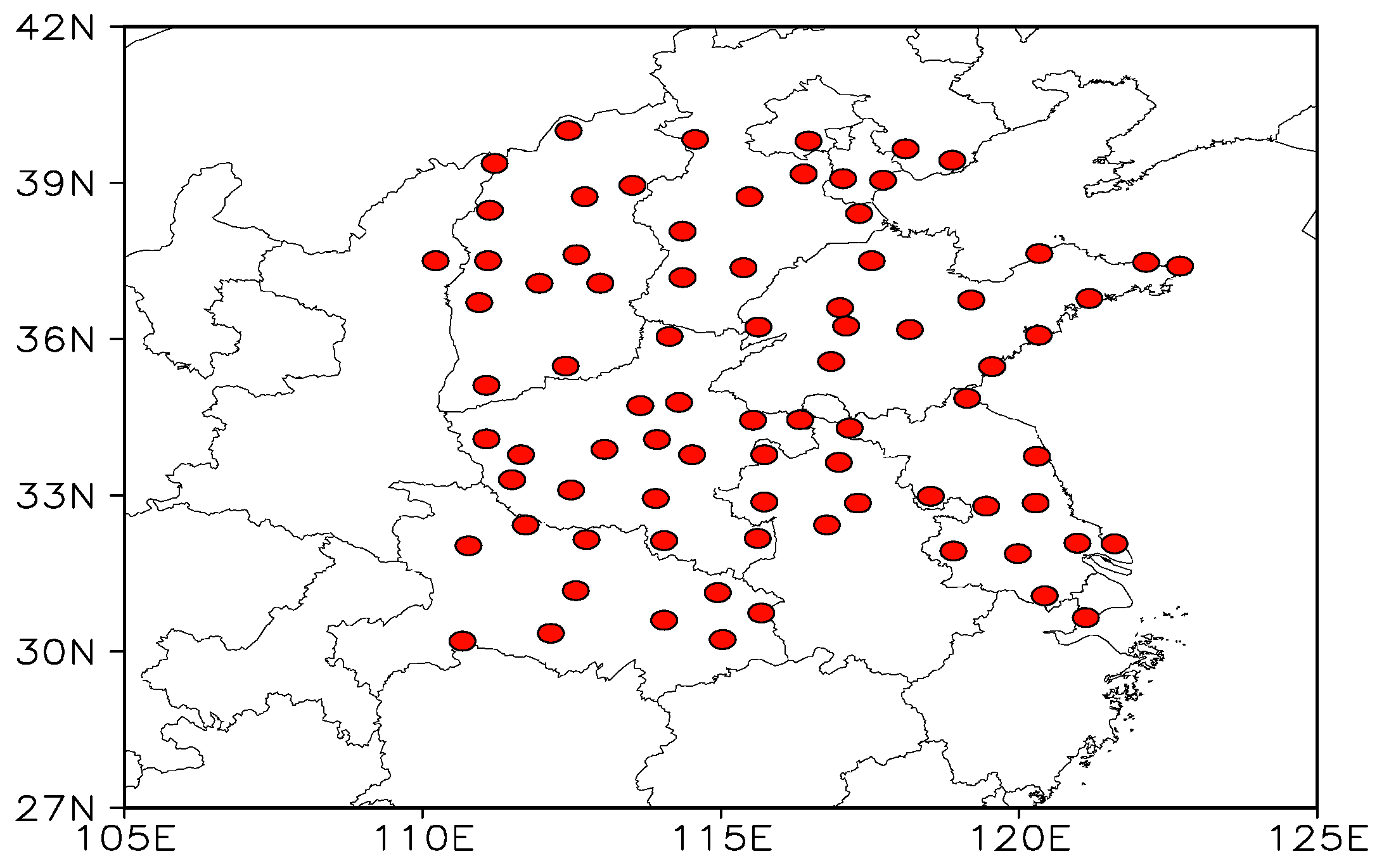

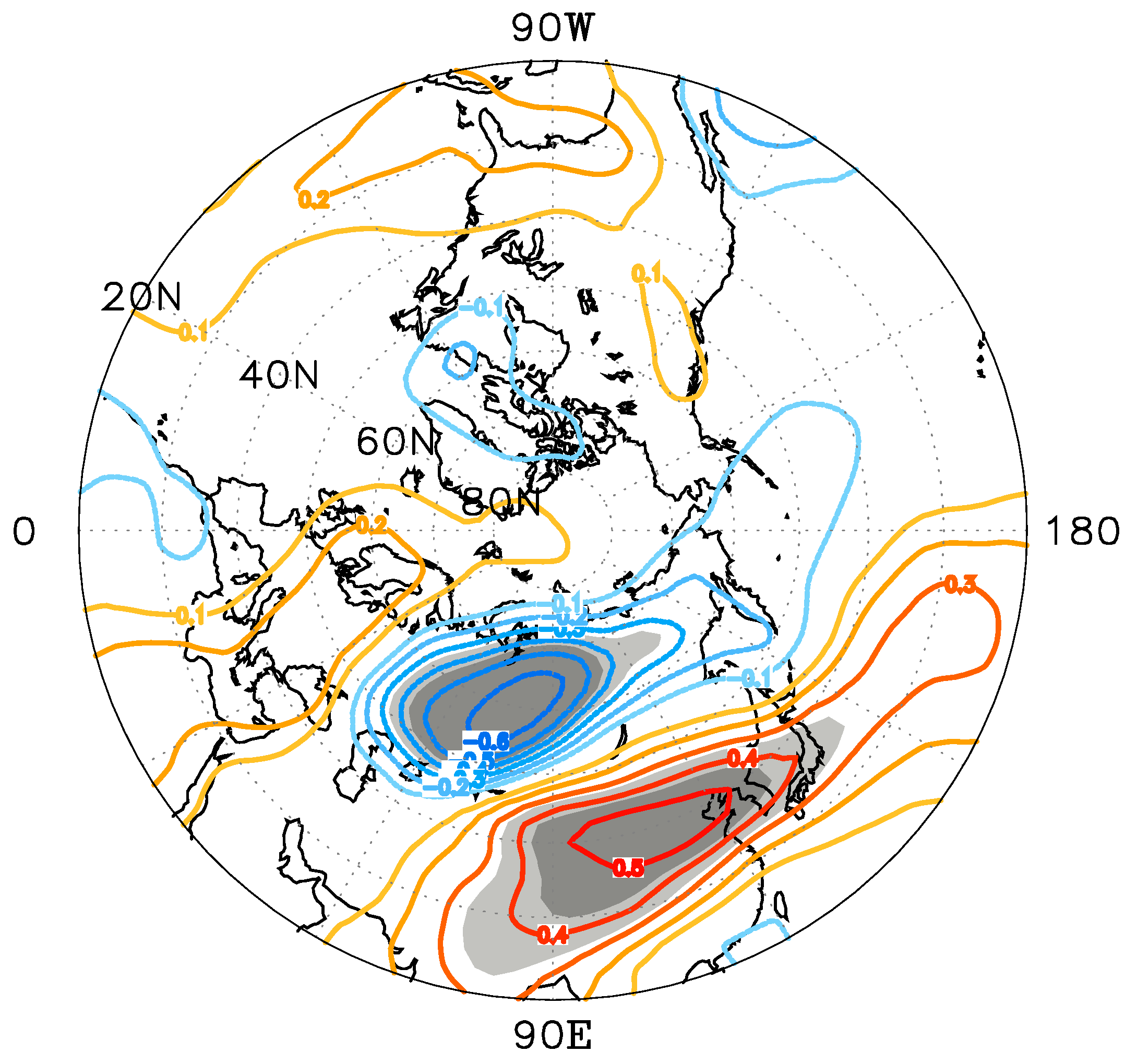
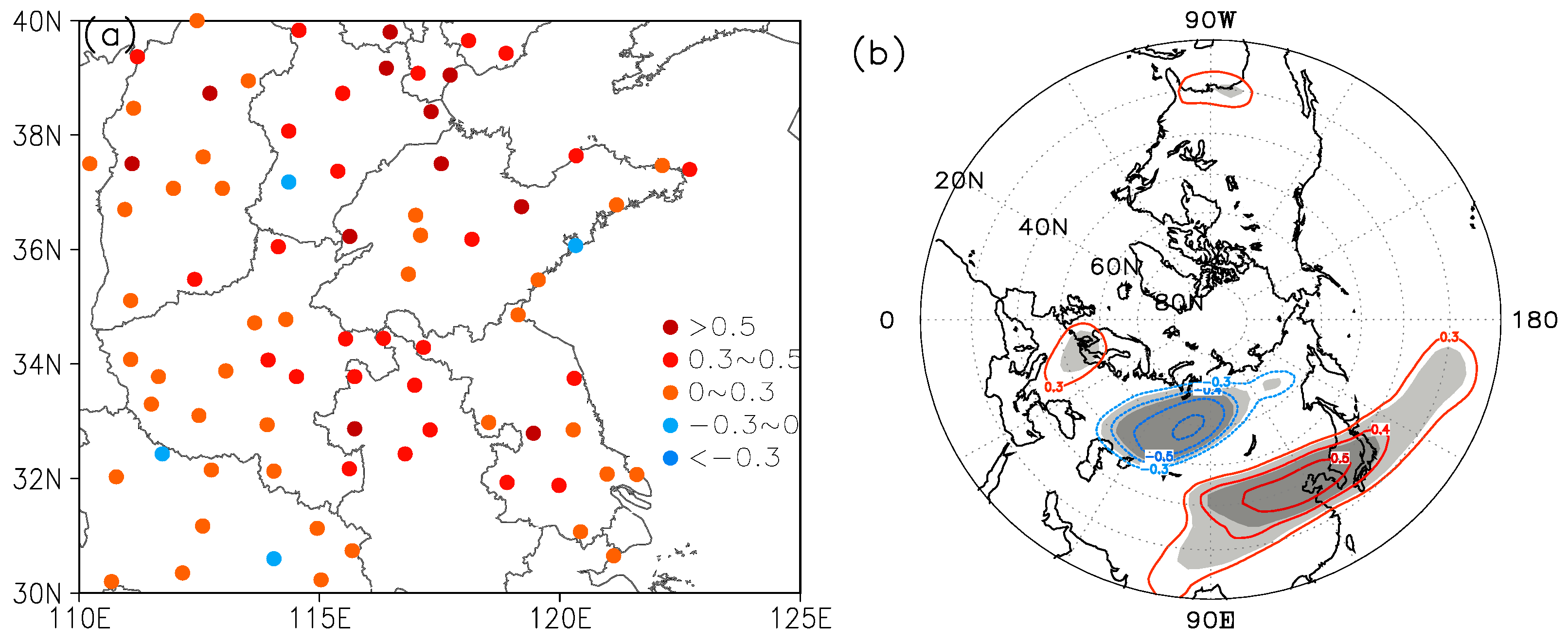
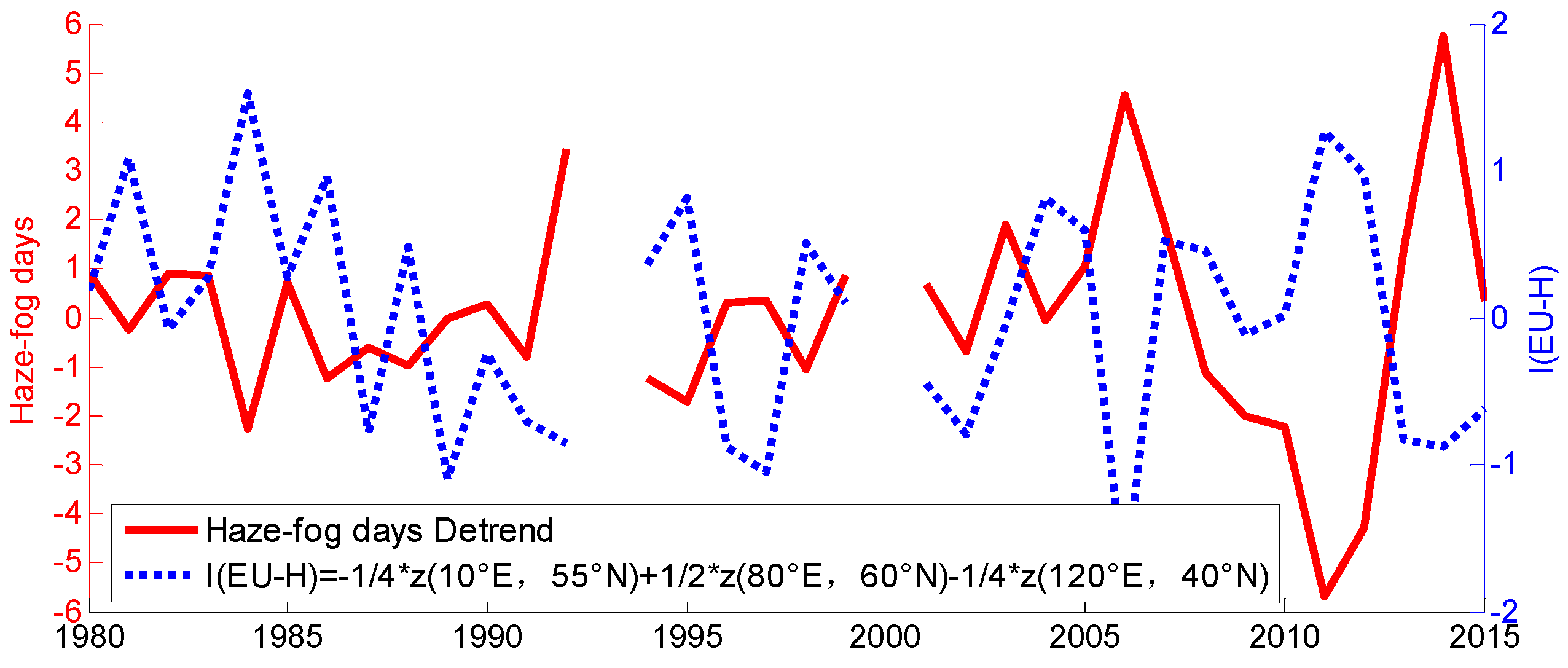
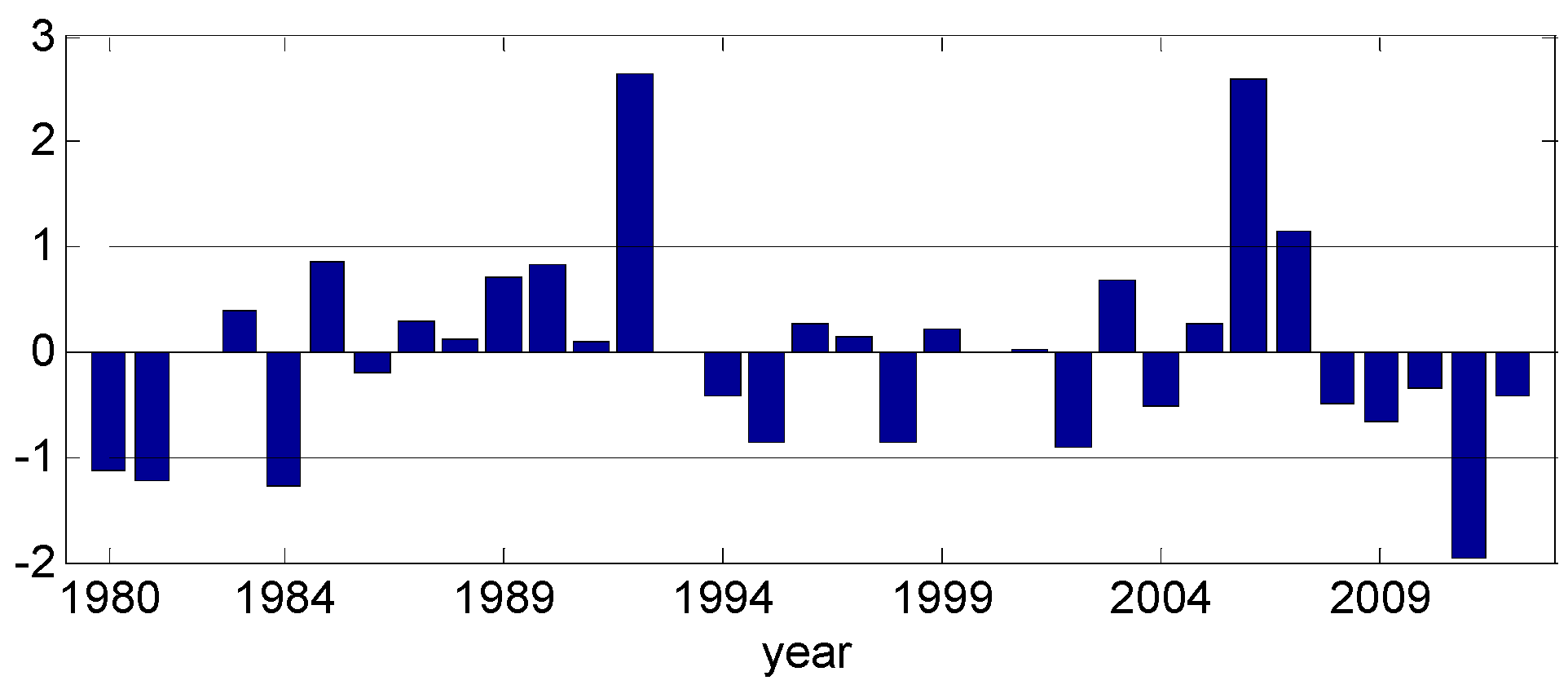
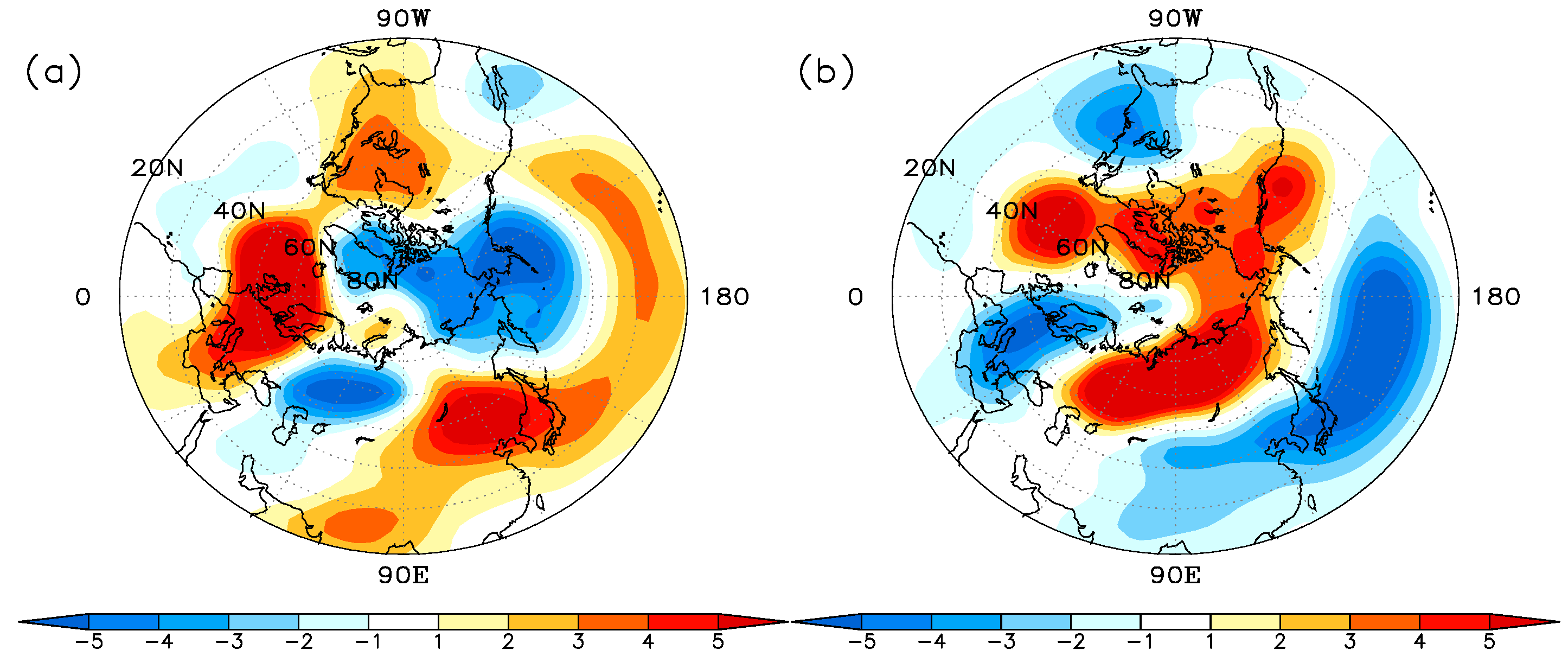
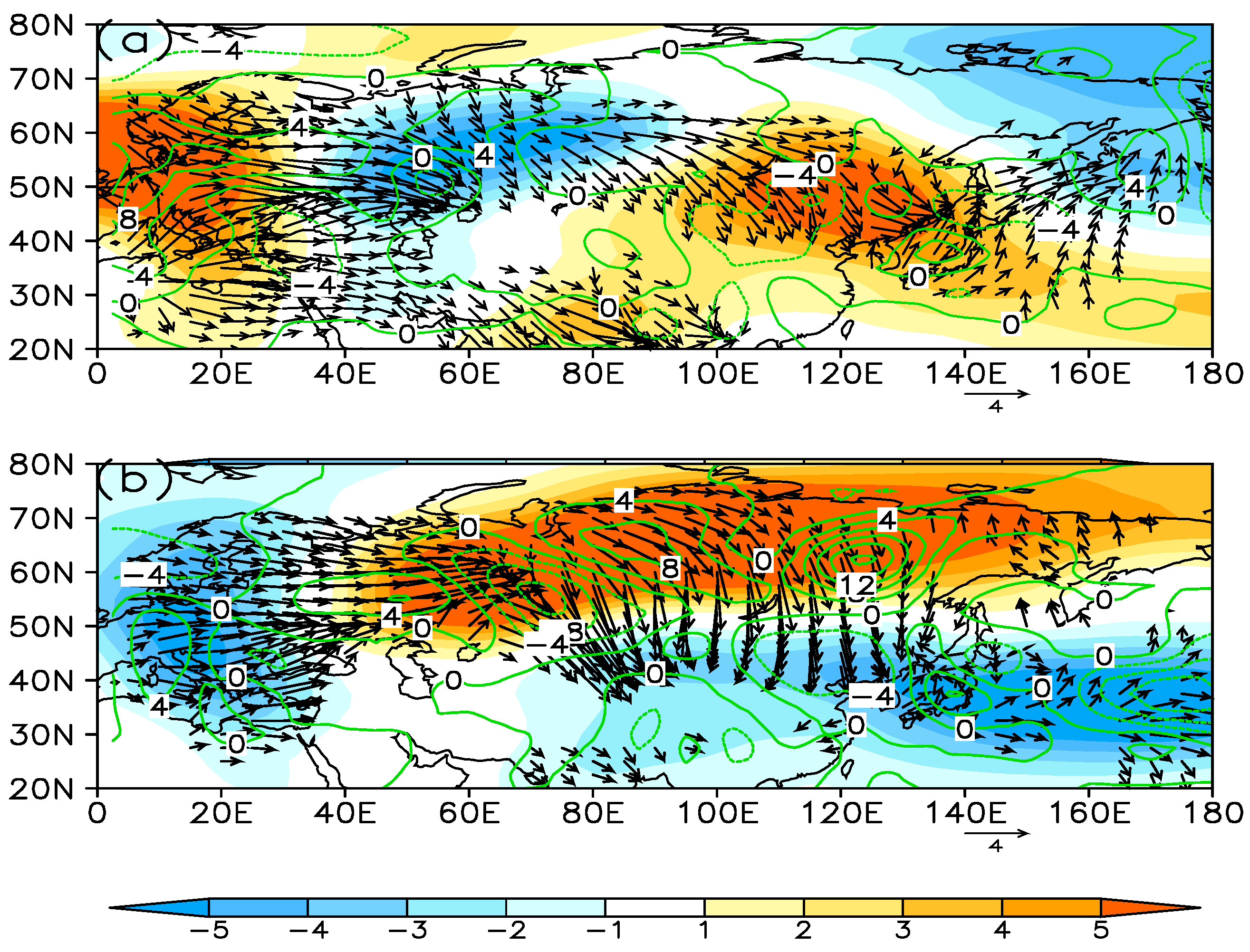





© 2019 by the authors. Licensee MDPI, Basel, Switzerland. This article is an open access article distributed under the terms and conditions of the Creative Commons Attribution (CC BY) license (http://creativecommons.org/licenses/by/4.0/).
Share and Cite
Li, Y.; Sheng, L.; Li, C.; Wang, Y. Impact of the Eurasian Teleconnection on the Interannual Variability of Haze-Fog in Northern China in January. Atmosphere 2019, 10, 113. https://doi.org/10.3390/atmos10030113
Li Y, Sheng L, Li C, Wang Y. Impact of the Eurasian Teleconnection on the Interannual Variability of Haze-Fog in Northern China in January. Atmosphere. 2019; 10(3):113. https://doi.org/10.3390/atmos10030113
Chicago/Turabian StyleLi, Ye, Lifang Sheng, Chun Li, and Yuhang Wang. 2019. "Impact of the Eurasian Teleconnection on the Interannual Variability of Haze-Fog in Northern China in January" Atmosphere 10, no. 3: 113. https://doi.org/10.3390/atmos10030113
APA StyleLi, Y., Sheng, L., Li, C., & Wang, Y. (2019). Impact of the Eurasian Teleconnection on the Interannual Variability of Haze-Fog in Northern China in January. Atmosphere, 10(3), 113. https://doi.org/10.3390/atmos10030113




